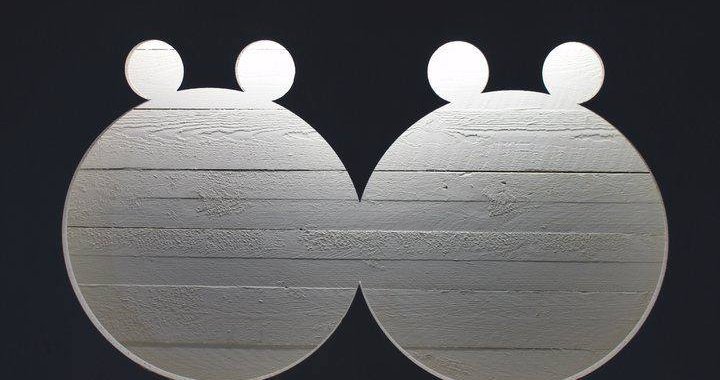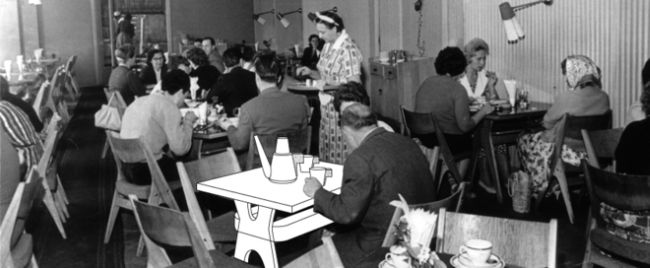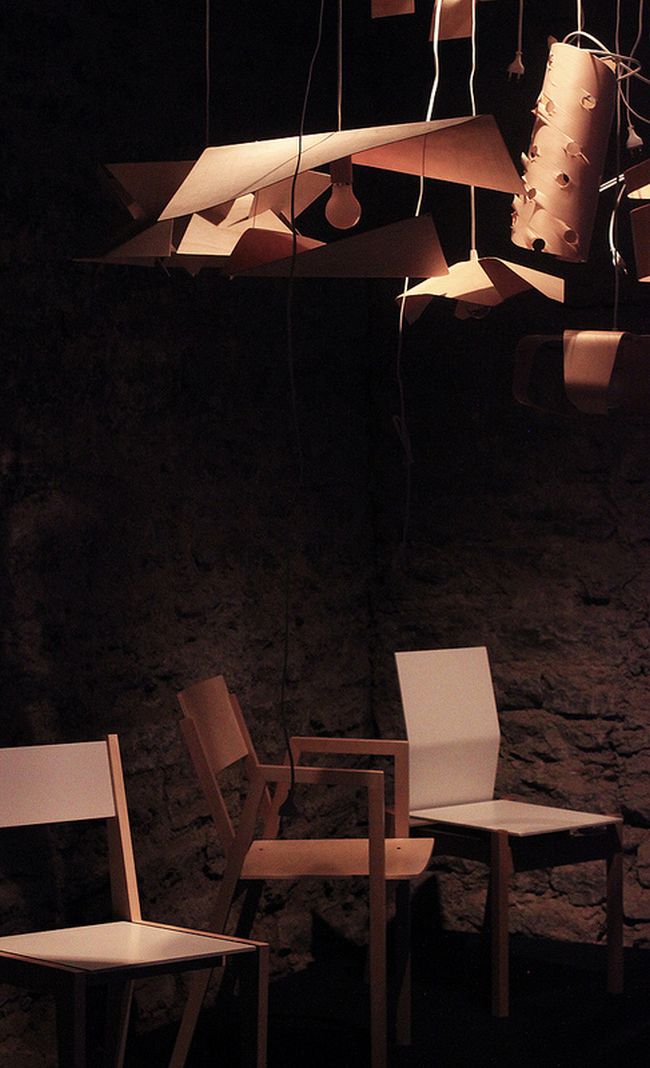
Design Night Festival in Tallinn. An Interview with Ilona Gurjanova, a Head Organiser of the Festival
Keiu Krikmann
26/09/2013
Design Night Festival (Disainiöö)
Tallinn, Estonia
September 26 – September 29, 2013
(Exhibitions until October 6, 2013)
In September 26, the annual Design Night Festival takes hold of Tallinn for four busy days again. The festival started out in 2006 with the intention of “getting design in the picture”, so to say, and over the years it has become a multifaceted event that offers a diverse programme for both a larger public and specialists but also focuses on collaboration between designers and industries.
This year the theme is Seeking Design Boundaries that aims to answer questions like “How to evaluate good design?” and ”Where are the roots of design to be found?”. The programme includes exhibitions, seminars, workshops, award ceremonies, performances and film screenings. In addition to exhibiting local and international architecture, product/industrial and graphic design, this year, the festival also has a fashion programme that explores the issues of innovation and sustainability. Additionally, it is worth remembering that even though officially the festival only lasts four days, most of the exhibitions stay open for at least two weeks.
The Design Night has a substantial amount of events directed to a broader audience but much of the promotional work and many of projects may not always be noticeable to the public eye. So, the following short interview with the head organiser of the festival and the chair of the Estonian Designers’ Association, Ilona Gurjanova will provide a glimpse at the territory beyond the more visible front of exhibitions and other popular events.

Estonian Design Display
You have stated that the overall goal of Design Night Festival is to make the local design more visible and introduce it to a broader audience as well as to businesses. This year, the Design Night Festival takes place for the eighth time – would you say people and businesses have become more aware of issues related to design? How does this affect the way you compile the festival programme each year?
Yes, the initial goal was, first and foremost, to introduce Estonian design to a larger public. Eight years ago, it was hard to get an overview of what was happening in Estonian design, there was no such environment – the Estonian Design House that now displays the creations of over 70 designers did not exist yet. Today, information concerning design is easily obtainable and I think thanks to the Design Night Festival, Estonian designers and their potential are more recognised as well. Businesses are also more aware and often seek opportunities for cooperation. The other important aim we have is to exhibit design trends from all over the world and introduce design from other countries.

From the Fashion Programme -70 Cotton Smocks. Marit Illison. Photo by JohannaEenma
In addition to organising design events for a larger public, Design Night Festival has another, somewhat more hidden agenda that, at least initially, is mostly directed towards designers – you help to create links between designers and industries and initiate projects that address issues of design within the public sector. A couple of years ago you launched Tallinn for All which was a part of the Design For All Europe platform and this year the focus is on public healthcare. Has the cooperation between designers and the representatives from different fields of the public sector been successful? Service design is a rather new concern in Estonia – are there even possibilities and preparedness to work with designers and means to carry out the projects?
European designers together with the European Commission have concluded that the public sector definitely needs to incorporate more design solutions. A compilation of guidelines for using design and design management in order to increase financial success and the quality of the service has also been published. The designers’ association is collaborating with colleagues from the UK, Italy, the Netherlands and Denmark to develop instructions for applying design management in the public sector. Estonia chose the field of healthcare services – together with a team of design students and designers we have audited three general practitioners’ centres and – alongside patients, doctors and nurses – we are working on improving the quality of their services.

Back to Estonian Roots. Raili Keiv

Back to Estonian Roots. Raili Keiv. Café Energia 1958
The Design Night Festival also includes competitions and designers receive different design awards each year. This year, for example, the winners of the web and graphic design awards and the competition Back to the Roots of Estonian Design will be announced. Additionally, the 16 winning projects of the DBA design effectiveness awards will be on display. In your opinion, how does organising events of that kind create benefits the field of design in a small country like Estonia?
The British association of design firms DBA is one of the few organisations in Europe that gives out awards based on the financially measurable results, for example, one of the winners of the 2013 award earned back the amount invested in design within two days. The exhibition will take place at the Estonian Business School. As for other awards, the web and graphic design award is given out each year, unlike Bruno, the Estonian biannual design award. What is new this year, is the design competition Back to the Roots of Estonian Design. Here, we wanted to create a dialogue between cultural heritage traditions and contemporary design. The results of the competition are exhibited at the Architecture and Design Gallery until October 5. I do see the competitions as beneficial because they make new designers and creative ideas visible – that otherwise might have never been presented to the public. And media also needs news about design. Moreover, we always introduce the more intriguing examples in other counties as well, mostly at exhibitions and fairs.

Setting up the exhibitions at the Design Elavator
Do you think the Design Night Festival and other related events have been successful, in terms of promoting local design?
Yes, I would say they have. But it was not only my doing. We have a great team! The Design Night Festival and its team have grown so much that by now I do not personally know half of the people involved. I am especially pleased with the successful projects that have started out as a part of the festival: Tallinn For All and the European Design Management Award the Tallinn City Transport Company received in 2012 is definitely one of those achievements that make up for the countless sleepless nights.